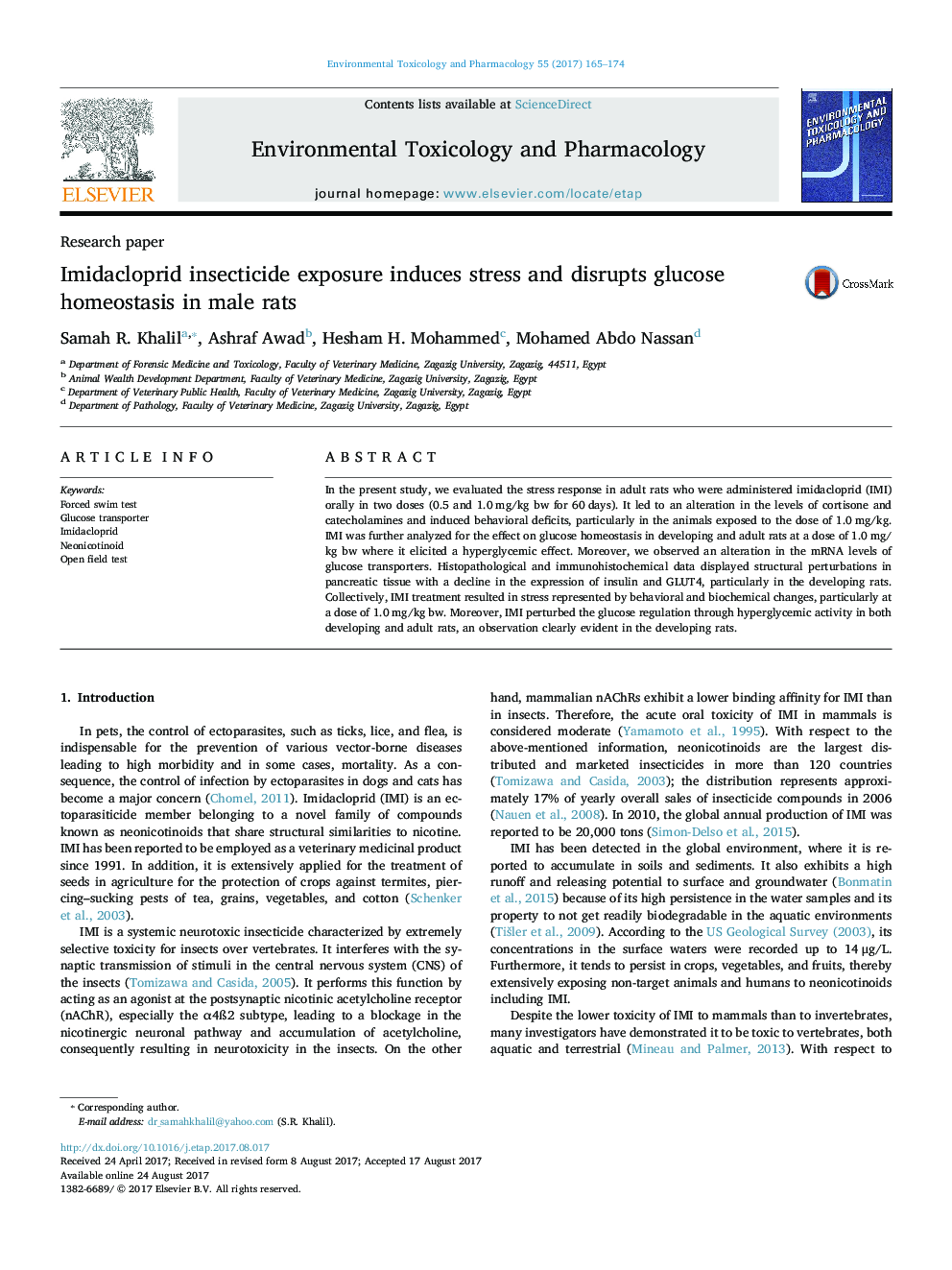| Article ID | Journal | Published Year | Pages | File Type |
|---|---|---|---|---|
| 5559784 | Environmental Toxicology and Pharmacology | 2017 | 10 Pages |
â¢Imidacloprid (IMI) induced behavioral changes particularly at a dose of 1.0 mg/kg.â¢IMI altered glucose homeostasis through hyperglycemic effect in the rat.â¢IMI altered the glucose transporters and NF-kB expression in the rat.â¢IMI exhibited a decline in insulin and GLUT4 expression in pancreatic tissue.â¢The hyperglycemic effect of IMI was more evidenced in the developing rat.
In the present study, we evaluated the stress response in adult rats who were administered imidacloprid (IMI) orally in two doses (0.5 and 1.0Â mg/kg bw for 60Â days). It led to an alteration in the levels of cortisone and catecholamines and induced behavioral deficits, particularly in the animals exposed to the dose of 1.0Â mg/kg. IMI was further analyzed for the effect on glucose homeostasis in developing and adult rats at a dose of 1.0Â mg/kg bw where it elicited a hyperglycemic effect. Moreover, we observed an alteration in the mRNA levels of glucose transporters. Histopathological and immunohistochemical data displayed structural perturbations in pancreatic tissue with a decline in the expression of insulin and GLUT4, particularly in the developing rats. Collectively, IMI treatment resulted in stress represented by behavioral and biochemical changes, particularly at a dose of 1.0Â mg/kg bw. Moreover, IMI perturbed the glucose regulation through hyperglycemic activity in both developing and adult rats, an observation clearly evident in the developing rats.
